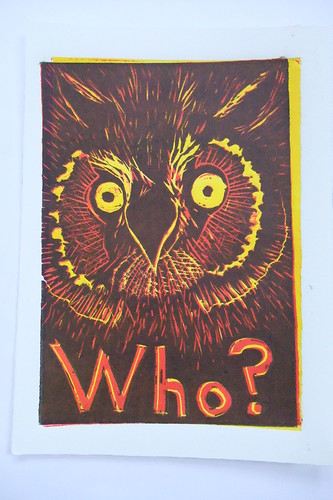
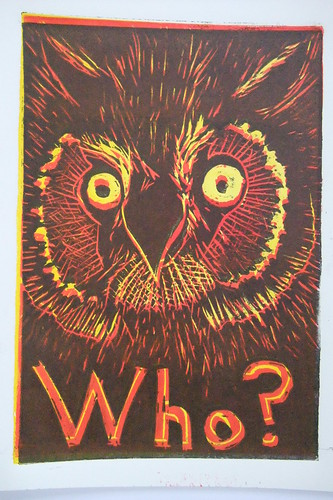
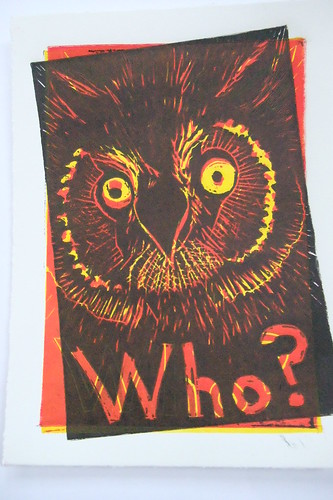
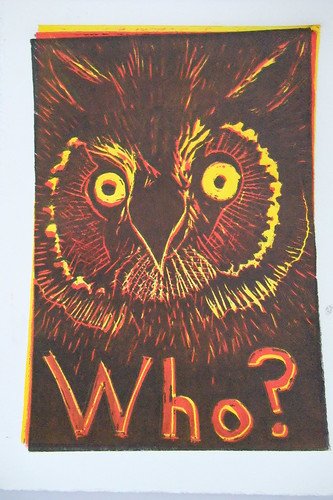
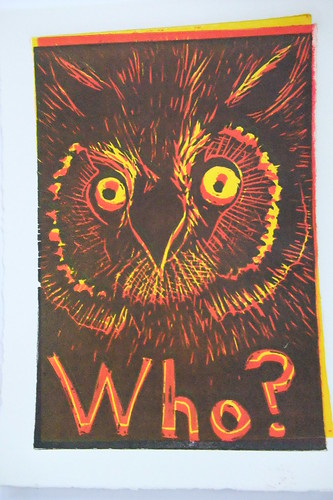
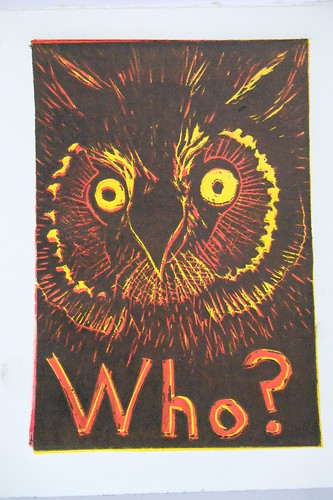
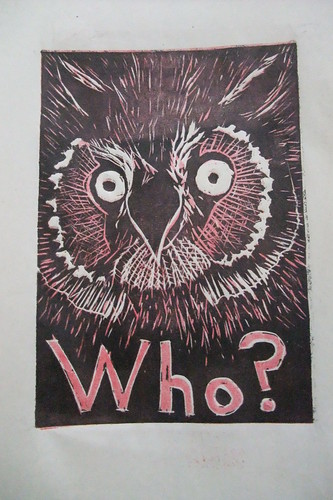
So last night, I had my second class of 'Power Printmaking'. This time it was, well, my specialty, relief printing. So, I wanted, in particular, to do something I was unlikely to do at home. As I suspected, this was easy because the teacher had planned a reduction print, which is something I rarely do. Also, we used stiffer lino than I would choose, oil-based inks (which I avoid, like the plague, though I confess their slower drying time and viscosity are enviable, but like a good scientist I abhor VOCs and prefer the more environmentally-friendly water-based inks), and of course, printed these on a press - actually two. So I got to play with presses. There are a couple of reasons I avoid the reduction print: 1) it's self-destructive (you carve a block, print a colour, irreversibly carve it some more, print a second colour, etc., and may end up with very little lino left) and 2) registration is tricky. Registration is the process of lining up successive printmaking marks so they are properly aligned. There are various tricks one can employ. The best I've seen is the Japanese method of kentos. With these prints, we employed a map (like a jig). The shape of the paper, and of the block was traced unto paper, under plexiglass on the bed of the press. So, in theory if your paper and block were lined up, registration of successive colours would naturally ensue. Of course, that rarely happens, as the photos testify. Though, that can be viewed as part of the beauty. I mean, owls with (accidental) red retinas, have a certain appeal. Even the one f*ck up is interesting. I include also a proof, lacking the yellow flat, because I like it. I should point out: attempting to print a three-colour lino reduction print, even if this small (photos are approximately life-sized on your screen), within 3 hours is dementedly ambitious.
What do you do to keep fit









No comments:
Post a Comment